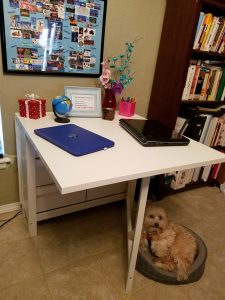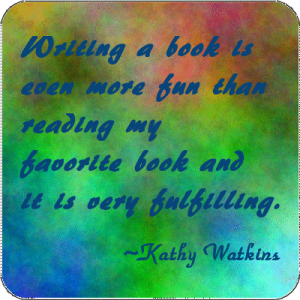Writing your First Book
Growing up, I always left the library or bookmobile with my arms full of 15 to 20 books tucked under my chin. I devoured them voraciously during the week and headed back for more. That still didn’t keep the process of how to write a book from being a mystery to me. If you can relate, this post is for you. I would love to take you behind the curtain to see the real “Wizard of Oz,” that is, how you can have success when writing your first book.
1. Know Where you are Going
Direction – It is good to know the overall direction of your book before you begin. This can be refined or even morph over time, but know your ending. After all, you can’t hit your target shooting in the dark.
Genre – Each genre has specific word counts, rules, and plot structures. Decide on one main genre that best suits your novel.
Target – What is your purpose for writing your first book? Select a specific reader that represents your target market and write to that person.
Writing a novel is like heading out over the open sea in a small boat. It helps if you have a plan and a course laid out. ~ John Gardner Click To Tweet
2. Set Goals
Set daily word count goals for yourself based on your target completion date and your specific genre. Aim for beating your word goals and you will be motivated and encouraged to continue. Don’t forget to give yourself rewards for your accomplishments.
3. Plan for Success
Spend time crafting an intriguing hook for your beginning and a glorious finish for the ending of your novel.
Consider tools that you want to organize your novel. These include a physical notebook, whiteboard, or index cards or post-it notes and corkboard, Microsoft Word, or Scrivener. Scrivener is considered by numerous professionals in various fields to be the best way to write. I love it and highly recommend it. Get help learning this powerful tool with one of several levels of Learn Scrivener Fast. Just get your ideas down!
Discover whether you are a Pantser or a Plotter or something in between. Since you are writing your first book, play with each of these styles and discover what frustrates you and what suits you. One of the tools that has helped me the most is a simple bulleted outline. It gives you a road map and can be easily adjusted as needed. An added bonus is that it minimizes writer’s block.
Pantsers – Pantsers like to write “by the seat of their pants” without any (or minimal) planning. Pantsers can still benefit from jotting down an overall direction or loose framework for their novel.
Plotters – Plotters like to plan their novel before they write. There are tons of pretty planning tools online to plan to your heart’s content. Plotters tend to finish their novels more quickly and easily, but can sometimes be more stilted. Confession: I am definitely a Plotter.
Pantsy Plotters or Plantsers – A Plantser is a combination of the Pantser and Plotter. Plantsers need some structure, but not too much.
4. Understand the Basic Elements of a Novel
Character Development – For beginners, it is easiest if you only have one protagonist, but a maximum of three. Spend some time getting to know your main characters. Give them conflicting goals and then throw all sorts of obstacles at them to thwart those goals.
Plot – There are several story structures available to develop your plot. Research and use a proven method like The Hero’s Journey, Blake Snyder’s Beat sheet, the W Plot Chart, or Dramatica. A tested story structure will give you a roadmap and keep you from wandering in circles.
Setting – Create an atmosphere that helps your reader feel as if they are in the scene. Don’t forget to describe the setting every time a character enters a new location.
Point of View – The Point of View is the view from which the reader learns the story. Before you start writing, decide on the Point of View, especially if you have more than one main character.
Dialogue – Dialogue makes your writing more interesting. Show the personality of the character in their dialogue. Avoid dialogue tags such as “he said” when it is clear who is speaking.
5. Write, Practice, Write More
Create a place to write where there are no distractions. This is our favorite writing space.
Practice writing daily. Also, hone your skills, especially narrative and dialogue. The Internet is full of Writing Prompts to help.
6. Add Interesting Elements
Use all five senses as often as possible. Add conflict, suspense, and tension. Slip in surprises and humor to delight your readers. Provide an ending with emotional impact that leaves readers coming back for more.
7. Never Trust your First Draft
You need to know going in that the first draft is extremely rough. Do NOT edit as you go because it destroys the creative flow. Keep a journal where you can write about anything to get it off your mind so that you can create a flow of words. Then your story will come.
8. Continue to Learn
Never stop learning about writing! Join writing groups, take classes, and attend writing conferences.
9. Never Give Up!
Don’t give up! You can do this! Inspire yourself with quotes. Click here to see some of my favorite writing quotes. If you run into writers block, do something else and then come back to write. I can’t explain it, but it’s like a fresh reset. Follow these tips and you will be well on your way to writing your first book and completing your own great novel.

10. Enjoy the Journey while Writing your First Book
Enjoy the process! Write a book that you would enjoy reading or have always wanted to read. I have found that the accomplishment of writing a book is even more fun than reading my favorite book and it is very fulfilling. I urge you to finish your book and I applaud your success!

![]() Writing a book is even more fun than reading my favorite book and it is very fulfilling. Tweet
Writing a book is even more fun than reading my favorite book and it is very fulfilling. Tweet
Kathy Watkins JoyousAdventuresinWriting.com







